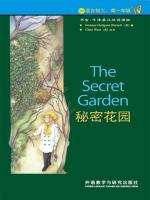书评
用户824009
It is a luminous tale of transformation, blending natural wonder with
human resilience. Set in the desolate moors of Yorkshire, the novel
follows Mary Lennox, a ten-year-old orphan sent to live with her
reclusive uncle, Archibald Craven, after her parents die in India.
Initially described as “sour-faced” and “disagreeable,” Mary’s journey
from isolation to vitality mirrors the revival of a hidden, neglected
garden—a potent symbol of rebirth and hope. The story begins with Mary’s
arrival at Miselthwaite Manor, a gothic estate shrouded in mystery.
Bored and lonely, she wanders the grounds until she discovers a locked
garden, its door overgrown with ivy. The garden, once a sanctuary for
her late aunt, has been abandoned for a decade following her tragic
death. Driven by curiosity, Mary uncovers the key and begins restoring
the space with Dickon Sowerby, a local boy with a “magic” touch for
nature. Together, they discover Colin Craven, Mary’s wheelchair-bound
cousin, hidden away due to his father’s belief that he is a “hunchback”
doomed to die young. Mary and Dickon introduce Colin to the garden,
where laughter, fresh air, and the thrill of growth awaken his body and
spirit. Burnett’s narrative is a masterclass in symbolism. The garden, a
microcosm of life’s cyclical renewal, becomes a character in itself.
Roses, robins, and springtime blooms are not mere backdrops but
catalysts for change. The characters’ emotional arcs are deeply
intertwined. Mary, once a “little tyrant” who lashed out at servants,
learns empathy through her bond with Dickon and Colin. Dickon’s kindness
and connection to the earth teach her to value others, while Colin’s
journey from self-pity to self-reliance mirrors her own growth. Even
Archibald Craven, the grieving uncle, undergoes a transformation,
returning from a European tour to find his children healed and his
garden reborn. Critics often note the novel’s psychological depth.
Burnett, influenced by the Victorian era’s interest in child
development, portrays Mary and Colin as active agents in their own
redemption. Their progress challenges societal notions of fragility,
particularly for wealthy children, by emphasizing agency over
victimhood. The garden’s restoration parallels their inner healing,
demonstrating how environmental stewardship can mend broken spirits. In
conclusion,The Secret Gardenremains a cornerstone of children’s
literature, blending fantasy with realism to explore timeless truths.
Burnett’s prose, described as “candy-scented” by theNew York Review of
Books, invites readers to rediscover their own “secret gardens”—places
of renewal where hope takes root. As Mary declares upon witnessing the
garden’s first blooms, “It’s the nicest spot ever!” This sentiment,
shared by generations, ensures the novel’s place in literary history.



 京公网安备 11010802032529号
京公网安备 11010802032529号